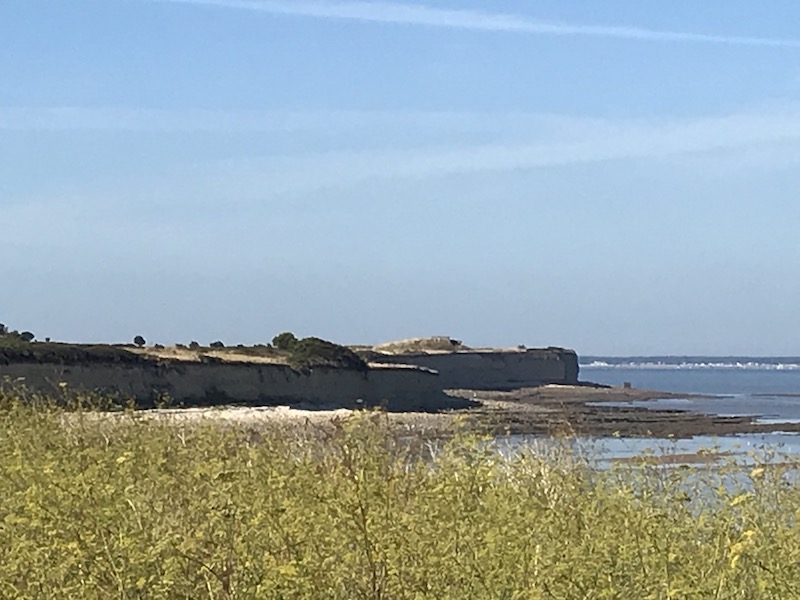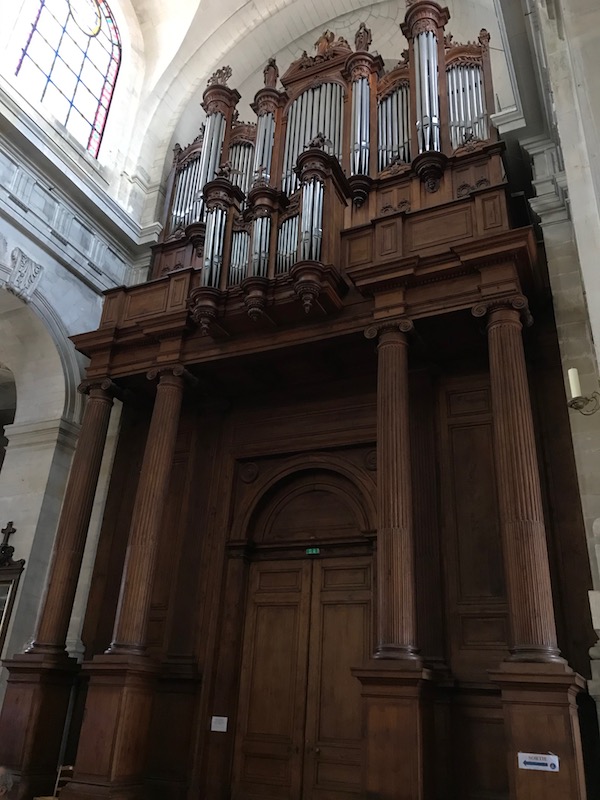Our Blog - La Rochelle, France
This is not exactly La Rochelle, but the coast nearby. We went there for a walk one morning with Lucy. First odd thing was these snails. I'm used to seeing snails on the ground, but here we had thousands, literally THOUSANDS of snails up on the stalks of tall grasses. So I asked on a couple forums in France about this and most people indicated that these were somewhat of a "hibernation" mode for the snails. They attach themselves up on the stalks and close themselves up to wait out the heat of the summer.


A couple views of our walk, which was a nice path (both walkers and bikes) along these tall cliffs. All along the Brittany coast, you can see concrete structures that we believe were part of the German Atlantic Wall defense fortifications. If you look closely at the top of the 3rd picture, you can somewhat see a structure that we think is one of these fortifications.



The historic center of La Rochelle is notable for its arcades, many medieval buildings, and especially the massive Clock Tower Gate, which separates the Old Harbor from the town itself. After parking at the port, we did a quick walking tour of the old town area. Our first view was of the Lantern Tower, also known as Tour des Quatre Sergents (tower of the 4 sergeants). It was used to signal boats using a fire lit up at the top, as well as being used as a prison at different periods.

And next to the Lantern tower is the Chain Tower, that gets its name from the big iron chain that had to be moved with a winch to let the boats in and out of the Vieux Port. The captain of the tower monitored the boats’ movements and passage rights and fees.

Between the Lantern tower and the Chain Tower is a walkway along the old ramparts.


On the other side of the old port is the 14th century Saint-Nicolas Tower. Similar to the Lantern Tower, it was used as a defensive tower and then a state prison.

The old port area is quite nice, with boats in the harbor for tours and to take people to the neighboring islands.

Clock Tower was the former gateway through the outer wall which separated the port from the city. In the 12th century, the base had two gates, one for carriages and one for pedestrians, but was altered to one single archway in 1672.


The former Stock Exchange building was built in 1760. In the courtyard: compass rose, maritime symbols, sundials and royal badges. This indicated the flouring trade of La Rochelle in the 18th century. In 1784, the two winds of the building were linked by a peristyle.





Rue de l'Escale is an old cobblestone street with lots of elegant homes, including the House of Nicolas Venette. He was a surgeon to the Royal Navy between 1622 and 1699. Skylights, gargoyles, an effigy of Asclepius and statues of famous doctors such as Avicenne, Hippocrates, Galien, Messué, Gordon and Fernel decorate the façade.



The Saint-Barthélemy Belfry, a bell tower from the 15th century that was preserved by the Protestants during the French Wars of Religion to serve as a lookout.

Next was the House of Henri II, with an ornate façade and galleries with sculpted ceilings.




Saint-Louis Cathedral was built starting in 1742 but after progress at a steady pace for 8 years, it stopped for lack of money in 1750. The walls of the cathedral then amounted to the cornice, from the front to the first bay of the choir. The construction of the cathedral resumed in 1849 and was mostly completed by 1857 (except for the two towers and the sculpted exterior decorations). The stained glass windows were created at the 19th century by three different workshops. Previously, the bays were simply furnished with white diamond-cut glasses and laid with lead ties. The current stained glass windows were put in place between 1872 and 1893. The organ was built in 1867 and a new wooden structure was added in 1869.





Across the main square from the cathedral is the Café de la Paix, with an interior that dates back to 1900). It was a favorite cafe of the writer Georges Simenon (Tom has read several of his books). The interior is lovely, but you pay dearly for the view with really high prices on the coffee!



I mentioned earlier that it is a town of arcades, and in the old city, you see these arched covered galleries/arcades on almost every street. What was great was also that almost all of the stores in these arcades was filled and open. It is great to see as sometimes we'll go to a village and 1/2 of the stores are empty.

There is still a market that happens at Place du Marché in the 19th century market building. We ended up walking by just after everything had been packed up and the cleaning crew had just started.

The Hotel de Ville or Town Hall has a flamboyant Gothic outer wall bearing the arms of the city over the gateway. The inner courtyard has a grand staircase and large statues.






In June 2013, a fire broke out here and did a lot of damage. Here you can see a picture of the fire. 26 different trades took part in the reconstruction of the and it reopened last year.

Église Saint-Sauveur has an interesting history. Originally, there was a 12th century Romanesque church that was replaced by a Gothic version. This was pulled down in 1568 during the religious conflicts with the exception of the bell tower, which remains. It was rebuilt for the 3rd time in the 17th century but then it burned down in 1705, except for the façade, which was saved. The current church dates from 1718. In the Chapel of the Sacred Heart is a 18th century trompe l'oeil that was found during the renovation of the church. It was covered with the old plaster coating.




